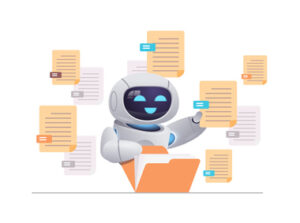
Robots — Allies or Adversaries?
 Technological advances often become a double-edged sword. For instance, when Eli Whitney invented the cotton gin at the turn of the 18th century, few foresaw how that breakthrough technology would impact slavery. Tragically, after technology reduced the labor of removing cotton seeds, American cotton production became so profitable that demand for slaves soared. From 1790 to 1860, the number of slave states grew from six to 15, with one in three Southerners enslaved. But does that mean automation is always damaging?
Technological advances often become a double-edged sword. For instance, when Eli Whitney invented the cotton gin at the turn of the 18th century, few foresaw how that breakthrough technology would impact slavery. Tragically, after technology reduced the labor of removing cotton seeds, American cotton production became so profitable that demand for slaves soared. From 1790 to 1860, the number of slave states grew from six to 15, with one in three Southerners enslaved. But does that mean automation is always damaging?
What automation does
Think about today. In the modern workplace, automation plays a rapidly increasing role in streamlining workflows and tasks. Automation spans many tasks, from administrative and mechanical to the replacement of tedious handcrafting. The following diverse functions have already been automated:
- Payroll.
- Accounting.
- Data entry.
- Inventory counting.
- Restocking.
- Policy updates.
- Certification compliance.
- Interpreting data.
- Reporting.
- Recruiting.
- Forecasting.
- Client information.
- Customer service.
Automation permeates the commercial realm, whether as a stand-alone process or in conjunction with human intervention. Many industries are embracing artificial intelligence and machine learning. We witness them in everyday uses, from supermarket self-checkouts to screening job applications of multiple candidates. Information technology, telecommunication, manufacturing, logistics and retail are among the most directly impacted industries.
A double-edged sword
Workers and management have both confirmed the benefits and disadvantages of automation. A central premise is the ability of automation to routinize simple, high-volume tasks, thereby allowing workers to spend more time and effort on more complex activities. This reallocation of tasks lets companies maintain or gain a competitive advantage over their competitors while focusing on their strategic priorities and higher-value projects. At the same time, workers may feel less stressed at performing automated tasks. Meanwhile, more developed skills and enhanced knowledge can add to their job enrichment. Rather than tediously churning out data or reports, they may apply their capabilities to more interesting or fulfilling challenges.
Cost savings for employers are an obvious plus. Another even more critical benefit is enhanced worker safety. Machines can replace humans in dangerous environments, such as warehouses that may store hazardous materials.
In particular, small-to-medium-size businesses with limited resources stand to gain from automation, leveling the field against larger competitors.
With so many advantages of automation, why has there been such resistance? Displacement is a clear and present fear of employees. Analysts acknowledge that many jobs will become obsolete and be eliminated as firms race to stay ahead of the curve. Most elevator operators are long gone. Data entry clerks may find themselves redundant, along with assembly and factory workers, executive secretaries, operational managers, receptionists and waiters. It is argued that new job skills will replace them, but that prospect offers cold comfort to someone who has been taking people up and down in elevators for 30 years.
Data privacy is a glaring negative. Risks of employees and customer data breaches keep mounting, with painful consequences for companies, employees and consumers. Automation opens some of these risks to wider-scale breaches. On the corporate side, another argument against excessive automation is the high cost of initial implementation.
Human and robot colleagues
It is not necessarily an either/or situation when robots are introduced into the workplace. Human intervention is an integral aspect of automation. The International Federation of Robotics even suggests less than 10% of jobs can be fully automated. Many require human assistance for maintenance and programming alone.
Think of call centers. An agent’s job can be deconstructed into separate roles. Robotic process automation, or RPA (another buzzword), can collect ID information and track the status of a delivery, but it takes a live person to soothe customer frustrations. Or consider the much-hyped driverless vehicles predicted to take over the wheel. They may provide efficient transport for routine navigation, but it is essential and reassuring to know that a human driver can step in to make decisions regarding safety.
Traditional work patterns will be disrupted. It will take time to reconfigure jobs to integrate both humans and automation. Ultimately, the goal is to achieve an optimal relationship between workers and machines.



